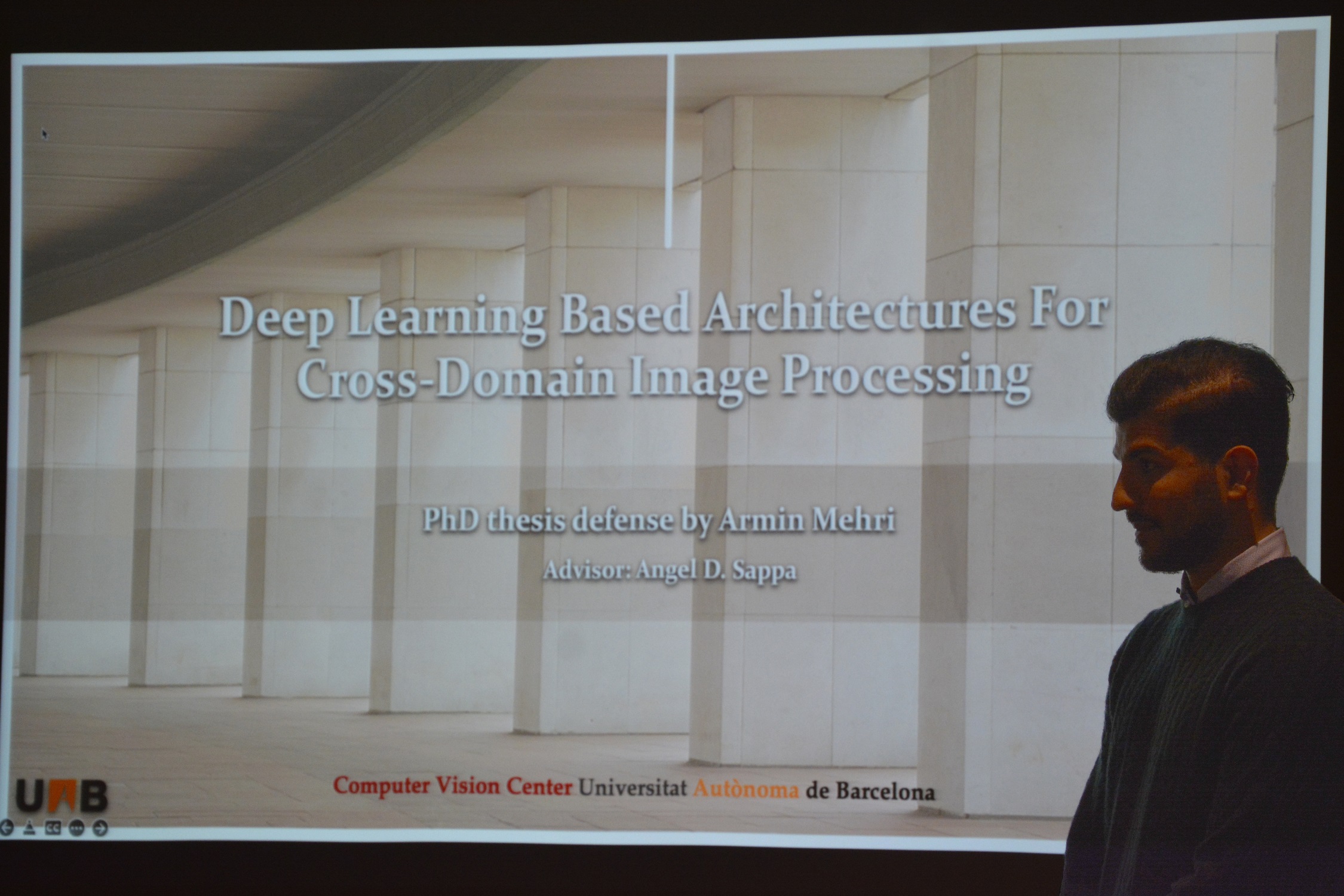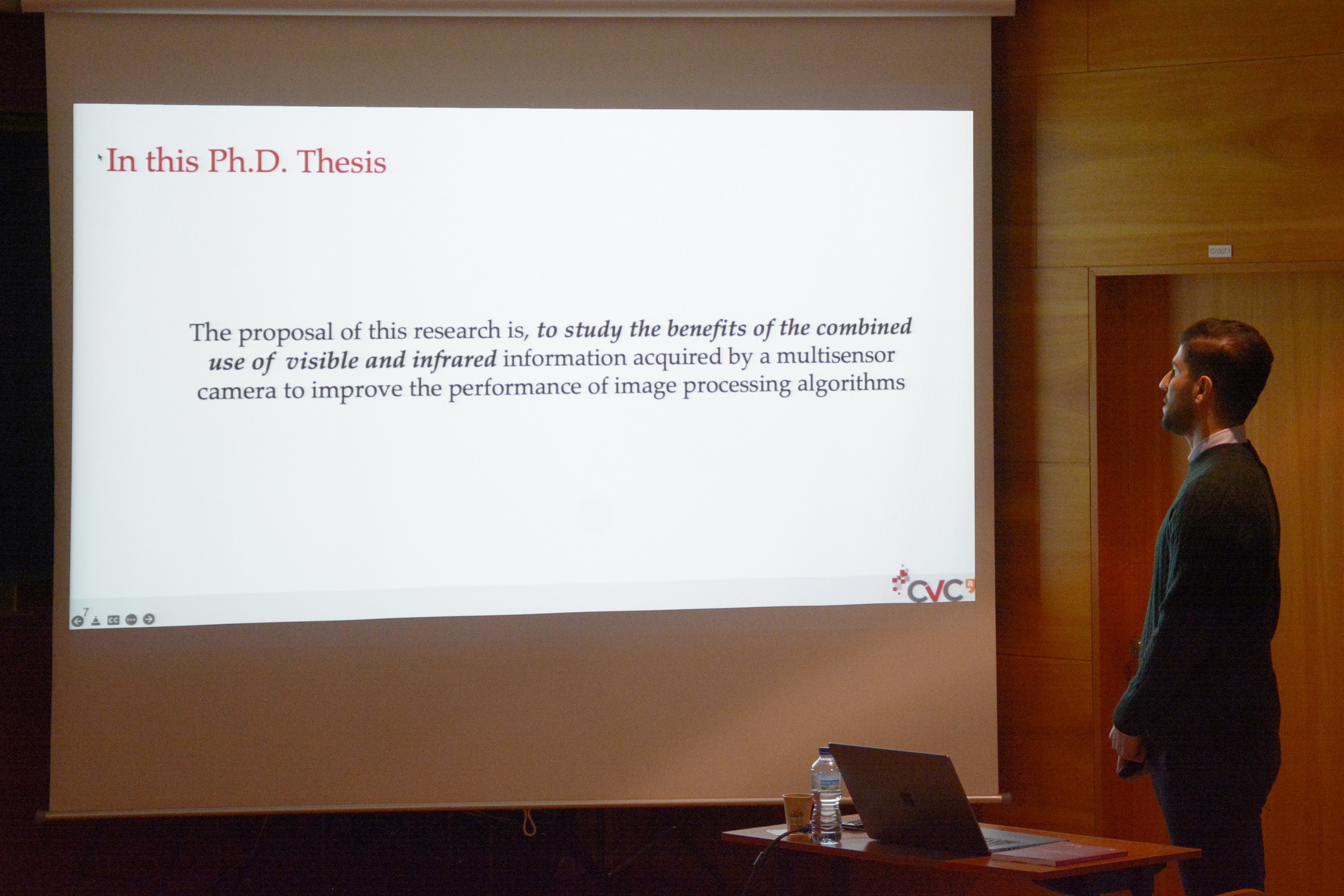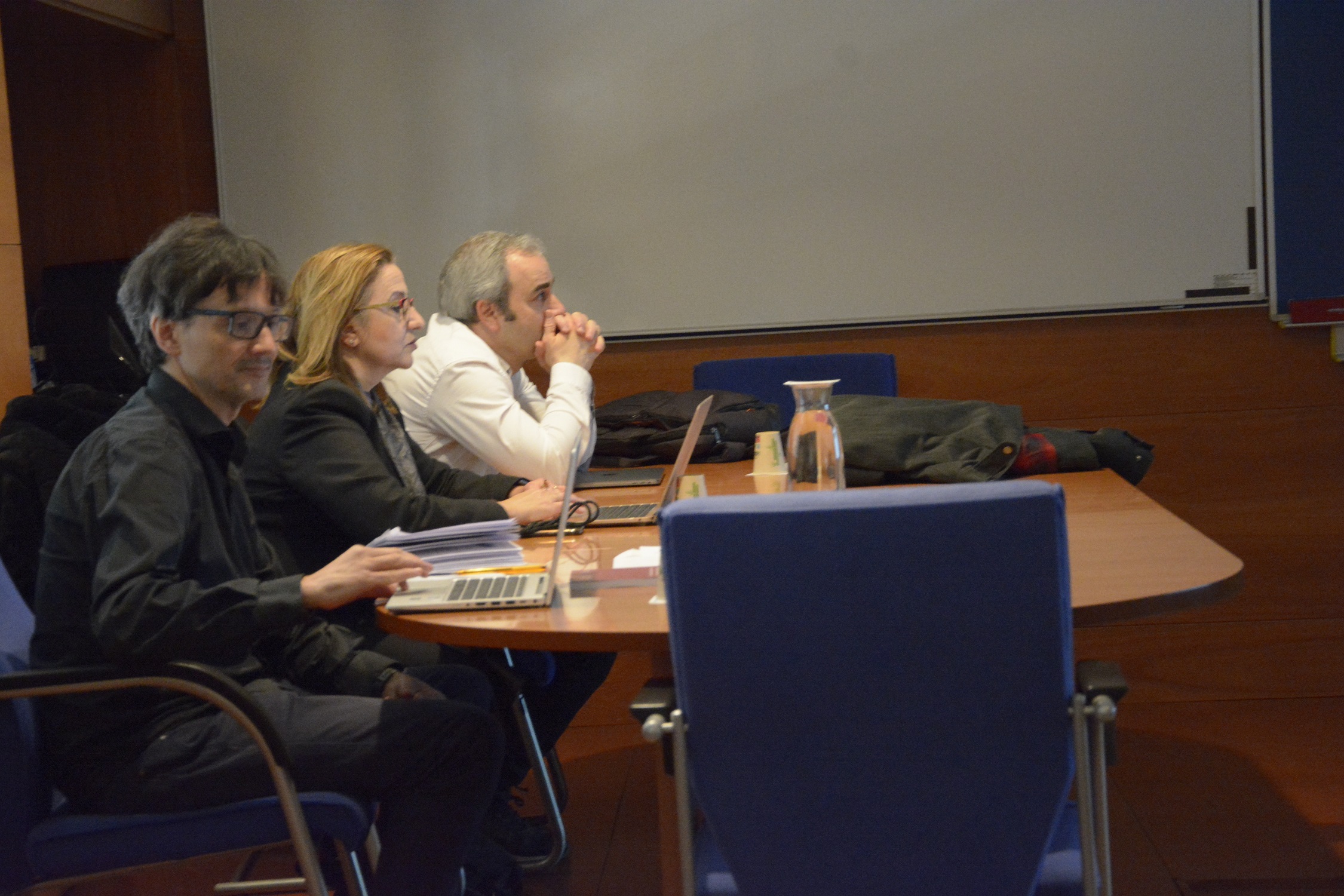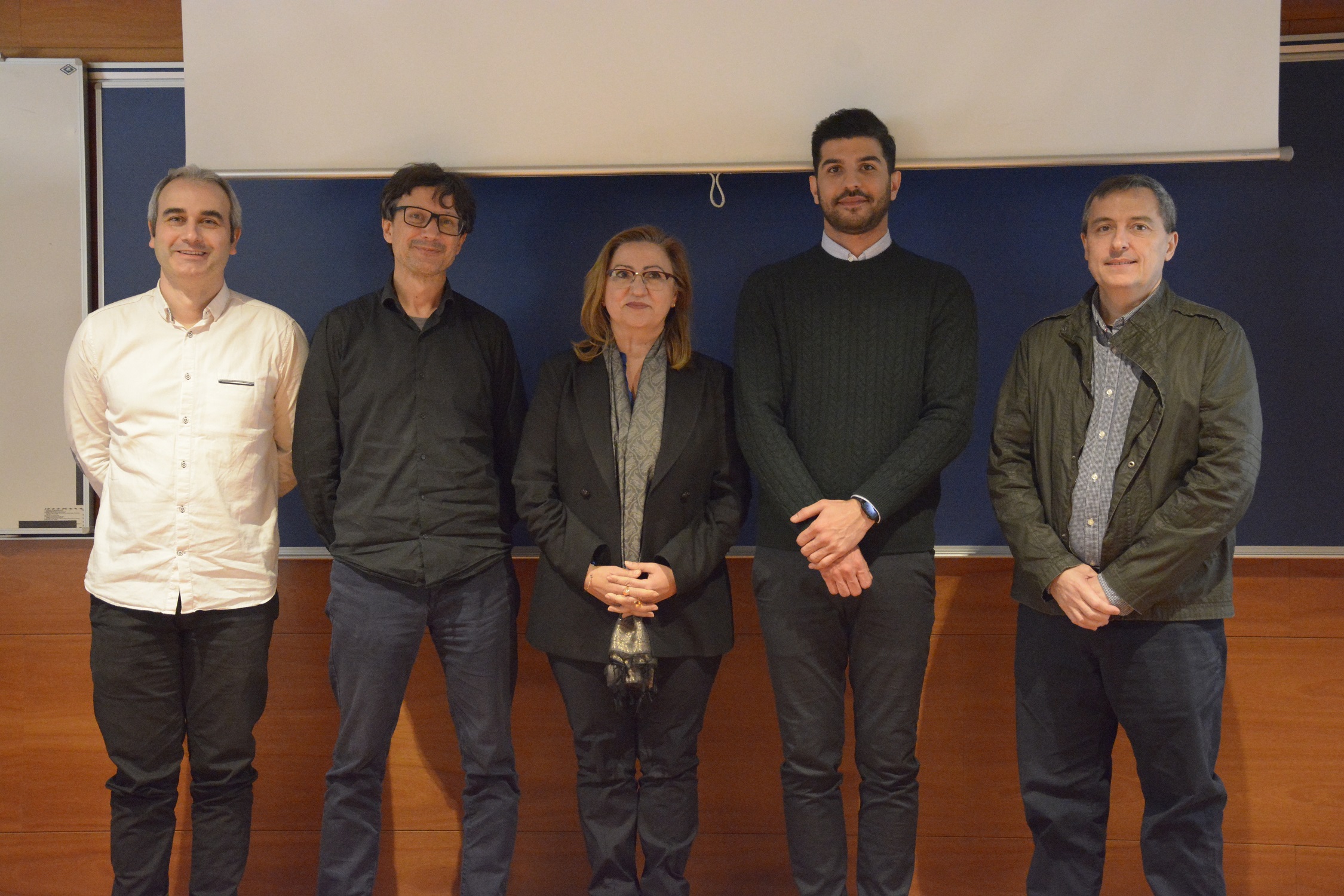
CVC has a new PhD on its record!
Armin Mehri successfully defended his dissertation on Computer Science on February 10, 2023, and he is now Doctor of Philosophy by the Universitat Autònoma de Barcelona.
What is the thesis about?
Human vision is restricted to the visual-optical spectrum. Machine vision is not. Cameras sensitive to diverse infrared spectral bands can improve the capacities of autonomous systems and provide a comprehensive view. Relevant scene content can be made visible, particularly in situations when sensors of other modalities, such as a visual-optical camera, require a source of illumination. As a result, increasing the level of automation not only avoids human errors but also reduces machine-induced errors. Furthermore, multi-spectral sensor systems with infrared imagery as one modality are a rich source of information and can conceivably increase the robustness of many autonomous systems. Robotics, automobiles, biometrics, security, surveillance, and the military are some examples of fields that can profit from the use of infrared imagery in their respective applications. Although multimodal spectral sensors have come a long way, there are still several bottlenecks that prevent us from combining their output information and using them as comprehensive images. The primary issue with infrared imaging is the lack of potential benefits due to their cost influence on sensor resolution, which grows exponentially with greater resolution. Due to the more costly sensor technology required for their development, their resolutions are substantially lower than those of regular digital cameras.
This thesis aims to improve beyond-visible-spectrum machine vision by integrating multi-modal spectral sensors. The emphasis is on transforming the produced images to enhance their resolution to match expected human perception, bring the color representation close to human understanding of natural color, and improve machine vision application performance. This research focuses mainly on two tasks, image Colorization and Image Super resolution for both single- and cross-domain problems. We first start with an extensive review of the state of the art in both tasks, point out the shortcomings of existing approaches, and then present our solutions to address their limitations. Our solutions demonstrate that low-cost channel information (i.e., visible image) can be used to improve expensive channel information (i.e., infrared image), resulting in images with higher quality and closer to human visual perception at a lower cost than a high-cost infrared camera.
Keywords: cross-domain image processing, image restoration, deep learning, computer vision.

















